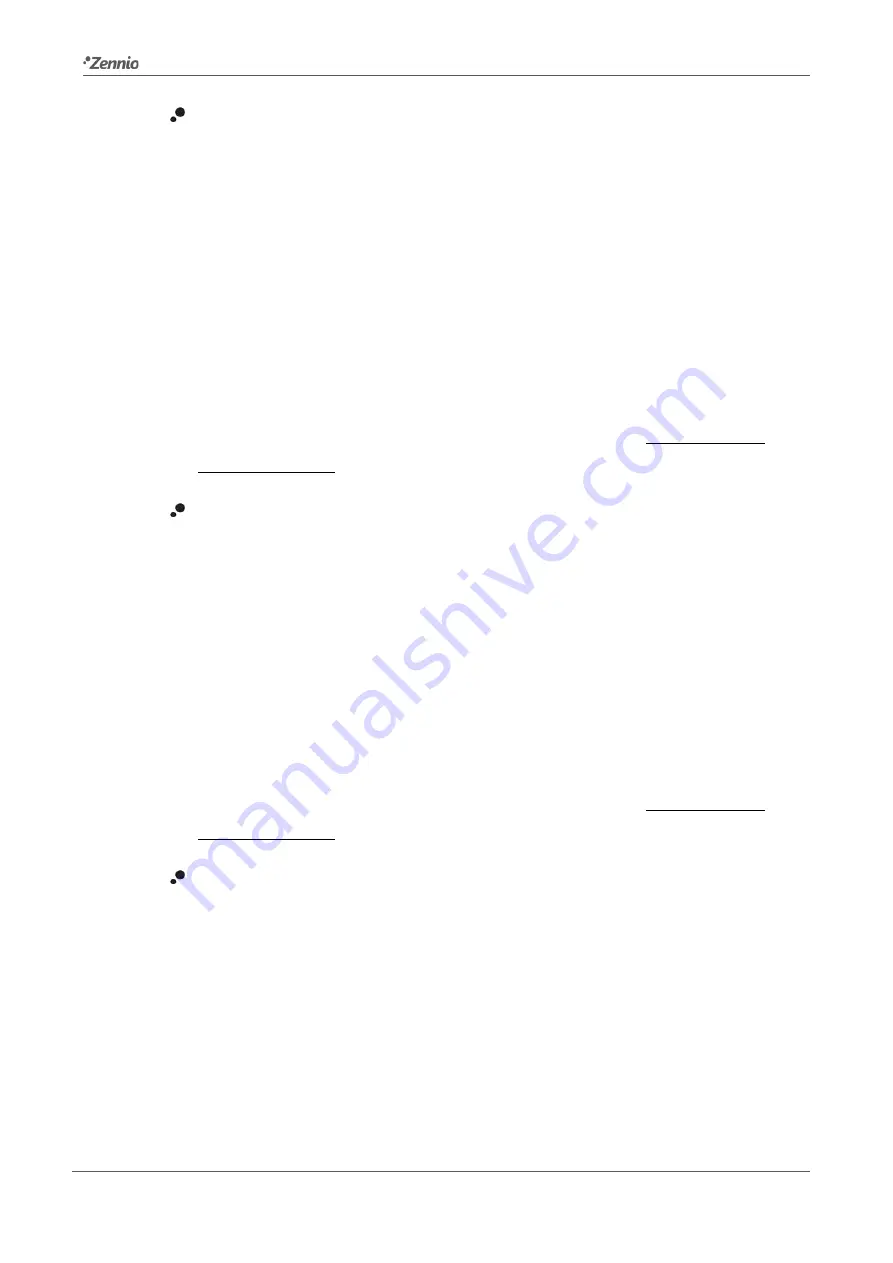
TMD-Display One
Technical Support:
http://zennioenglish.zendesk.com
35
Scaling
,
Counter
and
Float
: user touches over the buttons will trigger the
sending of a certain numerical value to the bus (this value will be
progressively increased or decreased every time the user touches one button
or the other) through the control object.
These controls provide a parameter to
link them to a box in the display
so
the current numerical value is shown on the display. The screen will reflect
the new values as the user touches the buttons, however values are actually
sent to the bus 1.5 seconds after the last press.
The “
state-dependent
” and “
state-dependent (both LEDs)
” LED
illumination modes are not available for this function (only the “
regular
” and
“
dedicated object
” LED illumination are available). See ANNEX I: LED
Illumination Modes for details.
Enumeration
: pressing the buttons will make TMD-Display send a one-byte
(unsigned) value to the bus. It is possible to distinguish up to 6 different
values. Successively pressing on the buttons will make TMD-Display walk
through the different values.
As the above functions, this type of control provides parameter to
link the
control with a box in the display
in order to show the current value on the
display. Again, values are sent to the bus 1.5 seconds after the last press.
The “
state-dependent
” and “
state-dependent (both LEDs)
” LED
illumination modes are not available for this function (only the “
regular
” and
“
dedicated object
” LED illumination are available). See ANNEX I: LED
Illumination Modes for details.
[Climate] Temperature setpoint
: permits controlling the temperature
setpoint of an external thermostat by means of a button pair and the display.
This function can also be
linked to a box in the display
in order to show the
current setpoint value. The box will reflect the value (in ºC) of the status
object, which gets automatically updated after sending control orders (that is,
after pressing the buttons), being even possible to receive values from the
bus, for example, from the corresponding setpoint status object from the
external thermostat.
















































